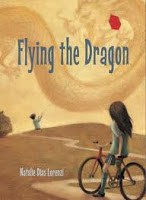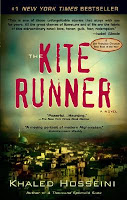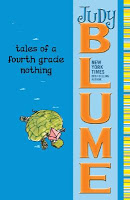I’m thrilled to have Natalie Dias Lorenzi with us today to talk about her debut middle grade novel Flying the Dragon (Charlesbridge, 2012). She’s a teacher, mother, wife, traveler, freelance writer and author. She writes book reviews for Biblio links, contributes to Emu’s Debuts, her agency’s author blog at the Erin Murphy Literary Agency, and creates teacher guides.
Jacket Flap Copy from Flying the Dragon:
Skye and Hiroshi have never met. How could they, when Skye’s father hasn’t spoken to his Japanese family since before she was born? But now their grandfather is sick, and the family is coming to the United States for his treatment. Skye and Hiroshi are stuck with each other.
Now Skye doesn’t know who she is anymore; at school, she’s suddenly too Japanese, but at home she isn’t Japanese enough. And as Hiroshi struggles to improve his English, he has to contend with Skye butting in on his rokkaku kite-flying time with Grandfather–time that seems to be running out.
Welcome, Natalie and congratulations!
Thank you, Carmen. I’m happy to be here!
Can you tell us about your path to publication? Any challenges along the way? Did your kite fly right away or did it take a few tries?
My kite definitely did not find its wind right away! It actually took a few years before this manuscript took flight. Originally, this story was only from Hiroshi’s point of view, and Skye was a mean girl named Susan in his class. After signing with my agent, I did another round of revisions, lightening up Susan’s character and added more interaction between her and Hiroshi. After a string of rejections, my agent and I pulled the manuscript and started talking revision ideas. I’d mentioned to her earlier that, if this book sold, I’d love to write another book from Susan’s point of view and tell her side of the story. My agent wondered if it wasn’t time for Susan’s story to come forward now, and so we settled on a dual point of view story with both Hiroshi and Susan as main characters. Susan the mean classmate became Skye, Hiroshi’s cousin, and I love the lightness she added to the story and to Hiroshi himself. Once the story went back out on submission, it wasn’t long before Charlesbridge showed interest, and eventually made an offer.
What is the inspiration behind the book?
I was fascinated by the sport of kite fighting after reading Khaled Hosseini’s THE KITE FIGHTER. I had never heard of kite fighting before, and went on to research the sport for an article I wrote for a children’s magazine called Learning Through History. My original plan was to write a picture book about a kite-fighting boy. I took an online class on writing for children, and one of our assignments was to write a 500-word scene that showcased dialogue between the protagonist and the antagonist. I wrote a scene that took place on Hiroshi’s first day of school in America, when Hiroshi tries to make friends with a Japanese-American classmate who rebuffs him. Once I wrote the scene, I knew I wanted to explore the dynamics of this conflict, and I knew this story wasn’t a picture book; it was a novel in disguise.
There’s a powerful sense of hope, family, forgiveness and finding your place in the world woven into Flying the Dragon. When does theme emerge for you in the revision process? How do you strengthen it without beating it to a pulp?
As an ESL teacher and someone who has lived overseas both as a child and an adult, I knew from the start that the “finding your place in the world” theme would be a dominant one in the story. I also wanted to leave readers with a sense of hope, especially for a middle grade audience. But the family and forgiveness thread came much later. I’d originally had a family tie between Hiroshi and Skye, but once I made them cousins, the family connection deepened significantly.
When it comes to strengthening themes as I revise, I don’t consciously set out to do so. I think that once you know exactly what your character wants—that kernel of a heart’s true desire—and then you deny him or her that very thing, themes will emerge naturally as your character deals with the blow of not getting what he or she wants. What’s fun about themes is that they often emerge when you’re not looking and not planning for them. They emerge as your character finds his or her path on the page.
Are you a plotter or a pantser?
I’m a little of both, I guess. I need to have a general idea of where the story is going, but the magic of writing, for me, comes with getting to know my characters as I create them. I think all writers are like this, even the true-blue plotters—we love the unexpected twists and turns as characters come to life on the page. I do own a copy of Blake Snyder’s Save the Cat, and I’ve used elements of it before, but I still leave lots of room for discovery as I write.
What author and/or book has inspired you the most in your life?
What a difficult question! There are so many I could name, but the earliest one was Judy Blume’s Tales of a Fourth Grade Nothing. My fourth grade teacher read it aloud to our class, and it was the first novel I’d heard that was laugh-out-loud funny. I couldn’t get enough of Judy Blume books after that, and I credit her (and my teacher) for making me an avid reader for evermore.
Any advice for the pre-published author?
Don’t write in a vacuum. Writing is a solitary activity, but that doesn’t mean that the before and after parts need to be solitary. Brainstorming and getting feedback from others is a significant part of my writing routine. I’ve been with my critique group now for almost seven years, and they’re such an amazing source of support and feedback. I found my group through SCBWI, but I know many writers have also connected via Verla’s Kay’s message board or local writers’ conferences. Although you may not always agree with the feedback you get, it helps to hear other writers’ opinions and listen to the questions they have about your stories.
What are you working on now?
Another middle grade novel and a picture book idea I’ve been toying with for awhile now.
What do you do when you’re not writing?
With three kids of my own, ages 6, 10 and 13, I’m usually wearing my mom hat—soccer games, taxiing kids from here to there, playing board games, and reading together. I’m also a full-time teacher—half-time ESL and half-time librarian until I finish my coursework this year to become a librarian full-time. Oh, and sometimes I sleep. 😉
Tell us 3 things you can’t live without.
My family, books, and dark chocolate!
Tell us 3 things you wish were never invented.
Lima beans, corn and beets. (Can you sense a recurring theme??)
Thanks, Natalie!
Thank you for hosting me, Carmen!
Check out Natalie’s beautiful website built by friend and Austin SCBWI writer Samatha Clark by clicking here.
Check out Natalie’s guest post at CYNSATIONS on teacher guides and her author spotlight at Charlesbridge.






